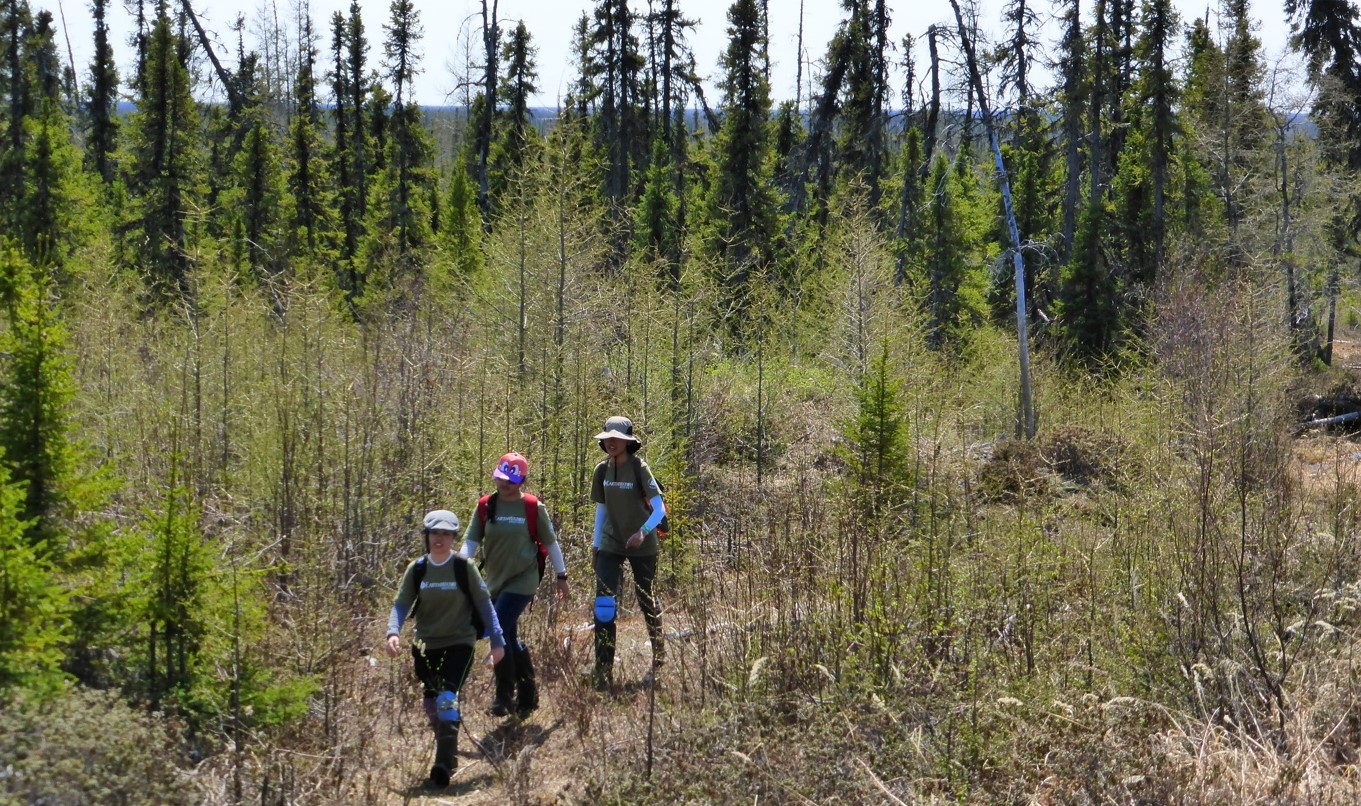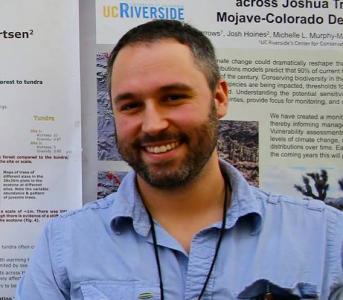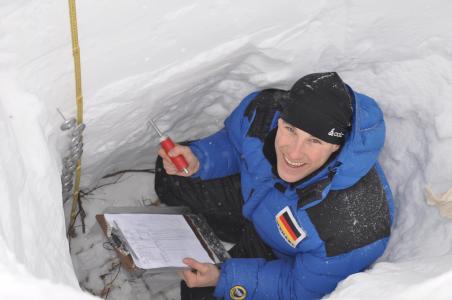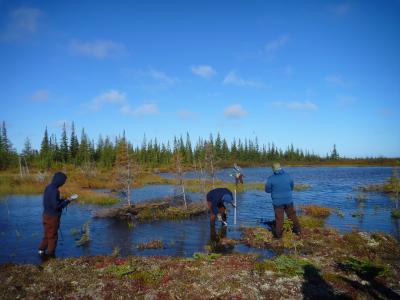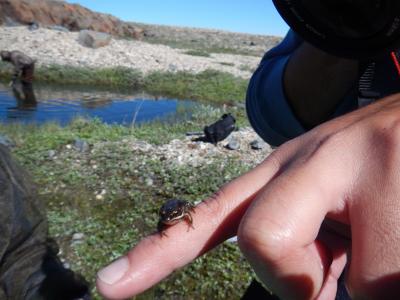The Anthropocene and You: How Earthwatch citizen scientists can support environmental stewardship
By Dr. Steve Mamet
Drs. Steve Mamet and LeeAnn Fishback are the lead scientists on the Earthwatch expeditions Climate Change at the Arctic’s Edge and Climate Change in the Mackenzie Mountains. In celebration of International Day of Climate Action, Steve shares some of the many ways Earthwatch citizen scientists can give back and help to protect our environment – both during and after the expeditions.
Human activity is now the main cause of most environmental change. These changes have been so profound that scientists suggest we have entered a new geological epoch called the Anthropocene, as we can now observe the global presence of humans in the geologic record. The Anthropocene epoch is a glaring reminder of how we have changed the environment.
The good news is that we as a global community have the means to change the environment for the better.
Though you might feel like your lifestyle is insignificant compared to things like oil extraction or vehicle emissions, the choices we make in our day-to-day life — how we get around, what we eat, how we live — play a major role in slowing climate change. And we as a global community can make a tremendous impact on the environment. One example is the Montreal Protocol in the late 1980s—which started with the scientific discovery of substances that deplete the ozone layer and the “ozone hole” above Antarctica, and culminated with a widespread change in policy to reduce ozone-depleting halogenated hydrocarbons. And this action took place before widespread scientific consensus was established, highlighting the importance and effectiveness of international action on environmental issues.
We’ve changed climate and the environment in the past and it’s inevitable we’ll change it in the future. In contrast to our ancestors who cultivated widespread deforestation, pollution, and climatic change, with little knowledge of how those actions would influence future generations, we now know we have more choices than ever before.
A more sustainable global community starts with informed choices by individuals like you and comfort in the knowledge that we as a global community can make a difference.
As part of our Climate Change at the Arctic’s Edge and Climate Change in the Mackenzie Mountains Earthwatch expeditions, Earthwatch citizen scientists travel to northern research sites in the Northwest Territories and northern Manitoba in Canada to help scientists collect a great breadth and depth of data and maintain long-term environmental monitoring.
But what can citizen scientists do to respond to climate change once they’re back from the field? On your expeditions, you’ve already taken leaps and bounds during your expedition time on the first crucial step: getting informed. But here are a few other tips to help you along the way (see http://www.davidsuzuki.org/ for more information).
- Get informed. A good place to start following the latest news about climate change is through realclimate.org: a site on climate science by climate scientists including Michael Mann, Ray Bradley, and Gavin Schmidt.
- Get involved. Contact your political representatives and tell them you want immediate action on climate change. Remind them that reducing greenhouse gas emissions will also build healthier communities, spur economic innovation, and create new jobs. Look to join sustainable living organizations in your area (you can start here: http://www.thegreenspotlight.com/). And when you’re at the polls, vote for politicians who support effective climate policies.
- Increase your energy efficiency. You already switch off lights — what’s next? Change light bulbs to compact fluorescents or LEDs. Unplug electronics when not in use. Wash clothes in cold or warm (not hot) water. Dryers are energy intensive, so hang dry when you can. Install a programmable thermostat. Look for the Energy Star® label (https://www.energystar.gov/) when buying new appliances. Home energy audits are cheaper than you think; book one today to find even more ways to save energy.
- Choose renewable power. Ask your utility companies and urge your elected representatives to switch to clean, renewable power, such as from wind farms. Consider adding solar panels to reduce your reliance on the energy grid.
- Eat wisely, including organic and locally grown foods. Avoid processed items that require a lot of energy to produce. Grow some of your own food. Eat low on the food chain — at least one meat-free meal a day — since 18 per cent of greenhouse gas emissions come from meat and dairy production. Become more familiar with your food and what it means to be able to eat pretty much anything. A great place to start is Michael Pollan’s book, The Omnivore’s Dilemma: A Natural History of Four Meals.
- Reuse, reduce, recycle. It sounds like old maxim, but one of the easiest ways to reduce your carbon footprint is to buy less, reduce what you throw away, reuse what you can, and recycle the rest. Garbage buried in landfills produces methane, a potent greenhouse gas. Keep waste out of landfills by composting kitchen scraps and garden trimmings, and recycling paper, plastic, metal, and glass. Let store managers and manufacturers know you want products with minimal or recyclable packaging.
- Let broad-scale polluters pay. Carbon taxes make polluting activities more expensive and green solutions more affordable, allowing energy-efficient businesses and households to save money. They are one of the most effective ways to reduce a nation’s climate impact. Carbon taxes are often revenue-neutral, meaning higher taxes on carbon supplement lowering other taxes you pay. If your state or province doesn’t have a carbon tax, ask your elected representative to implement one.
- Fly less. Air travel leaves behind a huge carbon footprint. Before you book your next airline ticket, consider greener options such as buses or trains, or try vacationing closer to home. You can also stay in touch with people by videoconferencing, which saves time as well as travel and accommodation costs.
- Green your commute through public or active transport. Transportation causes about 25 per cent of Canada’s greenhouse gas emissions, so walk, cycle, or take transit whenever you can. You’ll save money and get into better shape! If you can’t go car-free, try carpooling or car sharing, and use the smallest, most fuel-efficient vehicle possible.
